Related Research Articles
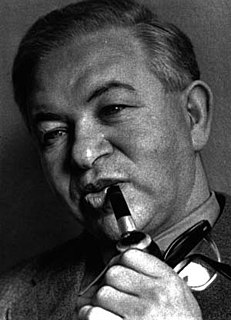
Arne Emil Jacobsen, Hon. FAIA 11 February 1902 – 24 March 1971) was a Danish architect and furniture designer. He is remembered for his contribution to architectural functionalism and for the worldwide success he enjoyed with simple well-designed chairs.
Hans Jørgensen Wegner was a Danish furniture designer. His work, along with a concerted effort from several of his manufacturers, contributed to the international popularity of mid-century Danish design. His style is often described as Organic Functionality, a modernist school with emphasis on functionality. This school of thought arose primarily in Scandinavian countries with contributions by Poul Henningsen, Alvar Aalto, and Arne Jacobsen.
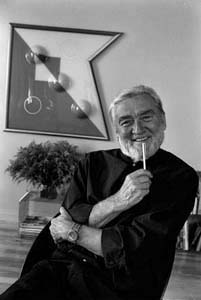
Verner Panton is considered one of Denmark's most influential 20th-century furniture and interior designers. During his career, he created innovative and futuristic designs in a variety of materials, especially plastics, and in vibrant and exotic colors. His style was very "1960s" but regained popularity at the end of the 20th century. As of 2004, Panton's best-known furniture models are still in production.
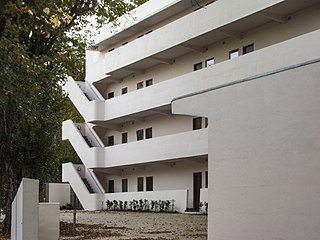
The London-based Isokon firm was founded in 1929 by the English entrepreneur Jack Pritchard and the Canadian architect Wells Coates to design and construct modernist houses and flats, and furniture and fittings for them. Originally called Wells Coates and Partners, the name was changed in 1931 to Isokon, a name derived from Isometric Unit Construction, bearing an allusion to Russian Constructivism.
Sir Terence Orby Conran was an English designer, restaurateur, retailer and writer. He founded the Design Museum in London. The British designer Thomas Heatherwick said that Conran "moved Britain forward to make it an influence around the world." Edward Barber, from the British design team Barber & Osgerby, described Conran as "the most passionate man in Britain when it comes to design, and his central idea has always been 'Design is there to improve your life.'" The satirist Craig Brown once joked that before Conran "there were no chairs and no France."
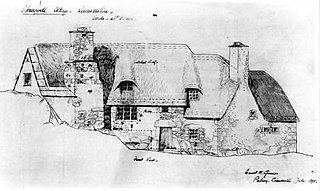
Ernest William Gimson was an English furniture designer and architect. Gimson was described by the art critic Nikolaus Pevsner as "the greatest of the English architect-designers". Today his reputation is securely established as one of the most influential designers of the English Arts and Crafts movement in the late nineteenth and early twentieth centuries.

Marco Zanuso was an Italian architect and designer.

Robin Day, OBE, RDI, FCSD was one of the most significant British furniture designers of the 20th century, enjoying a long career spanning seven decades. An accomplished industrial and interior designer, he was also active in the fields of graphics and exhibitions.
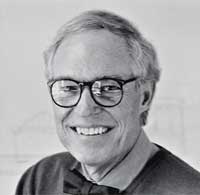
Niels Diffrient was an American industrial designer. Diffrient focused mainly on ergonomic seating, and his most well known designs are the Freedom and Liberty chairs, manufactured by Humanscale.

Ray-Bernice Alexandra Kaiser Eames was an American artist and designer who worked in a variety of media.
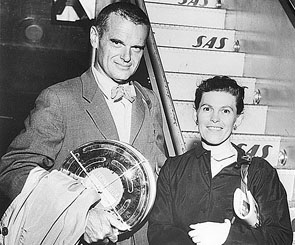
Charles Ormond Eames, Jr. (1907–1978) and Bernice Alexandra "Ray" Kaiser Eames (1912–1988) were an American married couple of industrial designers who made significant historical contributions to the development of modern architecture and furniture through the work of the Eames Office. They also worked in the fields of industrial and graphic design, fine art, and film. Charles was the public face of the Eames Office, but Ray and Charles worked together as creative partners and employed a diverse creative staff. Among their most recognized designs is the Eames Lounge Chair and the Eames Dining Chair.

Finn Juhl was a Danish architect, interior and industrial designer, most known for his furniture design. He was one of the leading figures in the creation of Danish design in the 1940s and he was the designer who introduced Danish modern to America.

Danish modern is a style of minimalist furniture and housewares from Denmark associated with the Danish design movement. In the 1920s, Kaare Klint embraced the principles of Bauhaus modernism in furniture design, creating clean, pure lines based on an understanding of classical furniture craftsmanship coupled with careful research into materials, proportions and the requirements of the human body. With designers such as Arne Jacobsen and Hans Wegner and associated cabinetmakers, Danish furniture thrived from the 1940s to the 1960s. Adopting mass-production techniques and concentrating on form rather than just function, Finn Juhl contributed to the style's success. Danish housewares adopting a similar minimalist design such as cutlery and trays of teak and stainless steel and dinnerware such as those produced in Denmark for Dansk in its early years, expanded the Danish modern aesthetic beyond furniture.

David Lincoln Rowland was an American industrial designer noted for inventing the 40/4 Chair. The chair was the first compactly stackable chair invented, and is able to stack 40 chairs 4 feet (120 cm) high.
Mogens Koch was a Danish architect and furniture designer and, from 1950 to 1968, a professor at the Royal Danish Academy of Fine Arts.

Busk + Hertzog is a Danish design team known for their award-winning furniture designs. Formed by designers Flemming Busk and Stephan Hertzog in 2000, they are two of the most awarded Danish designers, winning international design awards such as the Red Dot Awards, IF Awards, and Good Design Awards.
Don Charles Albinson was an American industrial designer who made many contributions to the world of furniture. He worked with Charles and Ray Eames for 13 years, helping develop many of the seminal Herman Miller furniture pieces from the mid century – the bent plywood chair, the fiberglass shell chair, the aluminum group set, and the Eames Lounge chair, to name a few. He later developed the Knoll Stack chair, the Westinghouse office line, an update to the DoMore Series 7 landscape system named Neo 7, the Albi stack chair for Fixtures, and the Bounce chair for Stylex.

Hille ( HIL-ee} is a British Modern furniture manufacturer which is especially noted for its range of Modernist chairs. Its products have been influential in the history of interior design and the company has been engaged internationally in a number of major design projects, including furnishings for the Royal Festival Hall and Gatwick Airport. A number of prominent furniture designers have worked for Hille, including Robin Day and Fred Scott.

Rosamind Julius was an English entrepreneur and furniture manufacturer. Together with her husband and her mother-in-law, they built up the Hille furniture company which used new British designers to create modernist furniture.

The 40/4 chair is an early example of the compactly stackable chair. A design by Harry Sebel in 1953 is likely the first example of the compactly stackable chair. David Rowland designed the 40/4 chair in 1964. Forty chairs can be stacked within a height of 4 feet (120 cm), giving the chair its name. Over time it has received a number of design awards and is in the permanent collection of the Museum of Modern Art in New York, as well as other museums internationally.
References
- 1 2 Design Museum, British Council. "Ernest Race". Archived from the original on 20 January 2012. Retrieved 16 June 2011.
- 1 2 "Ernest Race". Race Furniture. Archived from the original on 10 September 2011. Retrieved 16 June 2011.
- ↑ "Past Royal Designers - RSA". www.thersa.org. Retrieved 13 March 2019.
